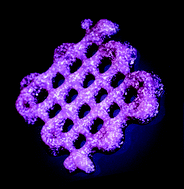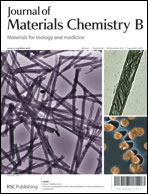Porous bioprinted constructs in BMP-2 non-viral gene therapy for bone tissue engineering
Abstract
A well-known osteogenic agent in the field of regenerative medicine is bone morphogenetic protein-2 (BMP-2). Non-viral delivery of a plasmid containing the gene encoding BMP-2 has shown to induce bone formation in vivo. In order to develop gene activated matrices into larger constructs, we created porosity in a hydrogel using bioprinting technology, thereby allowing better diffusion and blood vessel ingrowth. We were able to produce 3D constructs that were accurate and reproducible in size, shape and pore geometry. Constructs consisting of alginate supplemented with multipotent stromal cells (MSCs) and calcium phosphate particles were printed either in a porous or a non-porous/solid fashion. The plasmid DNA encoding BMP-2 was included in the constructs. Porous constructs were reproducibly bioprinted and remained intact for at least 14 days in culture. Cells were efficiently transfected by the plasmid DNA, and differentiated towards the osteogenic lineage as shown by elevated BMP-2 and ALP production. Porous constructs performed in the first week were better in producing BMP-2 than solid constructs. However, after implantation for six weeks subcutaneously in nude mice, no bone formation was seen, which calls for optimization of the biomaterials used. In conclusion, we show for the first time a model in which 3D printing and non-viral gene therapy can be combined.


 Please wait while we load your content...
Please wait while we load your content...